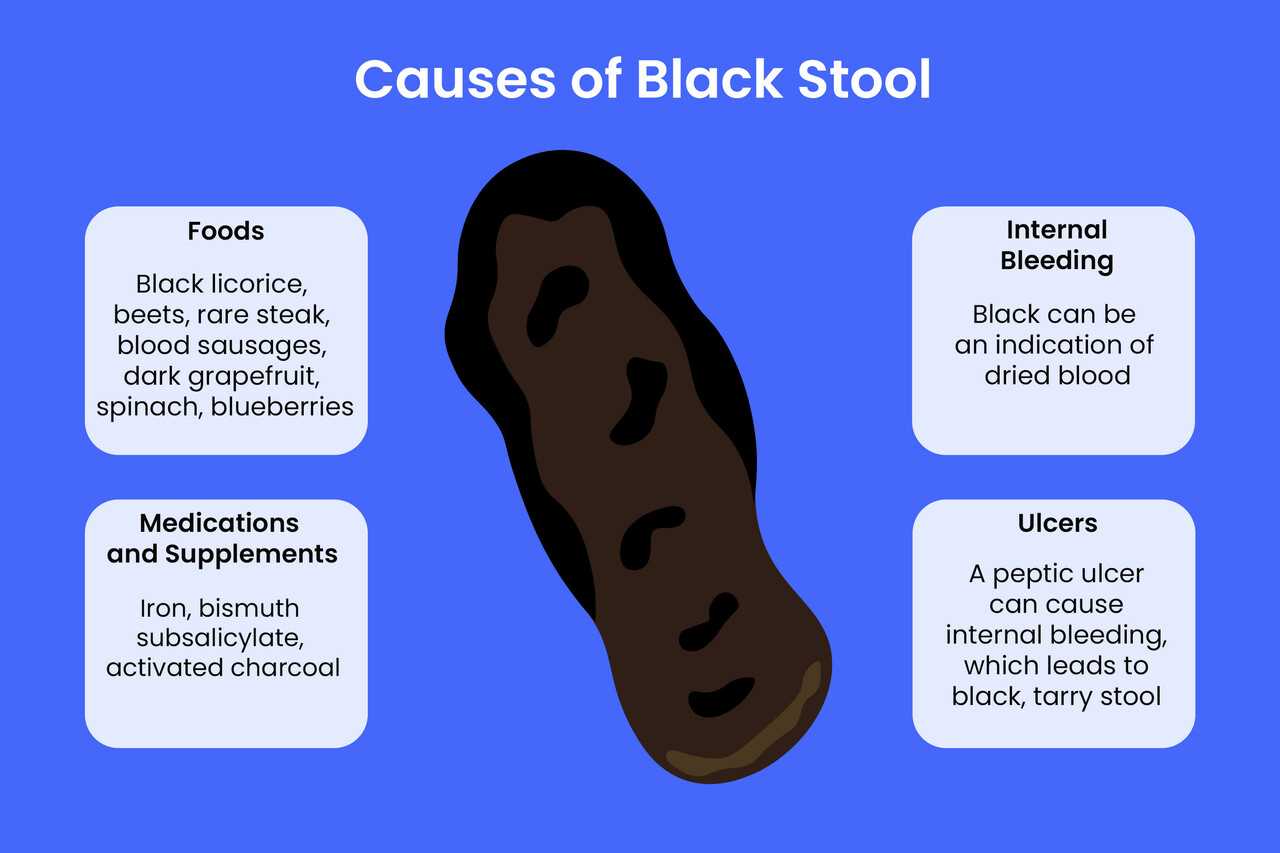



If you notice a dark coloration in your stool after indulging in specific varieties of fermented grape beverages, it’s not uncommon. The pigments and tannins present in these drinks can lead to this phenomenon. It’s essential to monitor your body’s reactions and consider the types of foods and drinks consumed in tandem.
The compounds in these beverages, particularly anthocyanins, can alter stool color due to their intense pigmentation. Additionally, the high tannin content might influence digestion and gut health, contributing to variations in stool appearance. If you frequently experience this change, keep track of your consumption patterns and consult a healthcare professional if concerns arise.
Pairing these drinks with lighter fare may mitigate any drastic changes in your digestive outcomes. Foods rich in fiber can help regulate digestion, potentially balancing the effects of these beverages. Always prioritize hydration and a balanced diet to support your overall digestive health.
Effects of Certain Beverages on Stool Color
Consuming beverages with dark pigments can lead to noticeable changes in stool appearance. Specifically, drinks rich in tannins and anthocyanins, found in various fermented grape products, may contribute to darker excretions. This effect is often temporary and varies from person to person, depending on individual digestion and metabolism.
Factors Influencing Stool Color
Numerous elements, such as diet, hydration levels, and overall gut health, play a role in stool coloration. Foods like blackberries, blueberries, and dark chocolates can similarly impact hues. Additionally, certain medications or supplements may also cause shifts in color. If experiencing consistent changes, consulting a healthcare professional is advisable.
Monitoring Your Health

While the occasional color shift is generally harmless, persistent darkening could indicate underlying health issues. It’s crucial to observe any accompanying symptoms, such as discomfort or changes in bowel habits. Keeping a food diary may help identify patterns linked to dietary choices. Staying informed and proactive about your health is always beneficial.
Understanding the Components of Red Beverage
The pigments responsible for the deep hues in this drink are primarily anthocyanins, found in the skins of dark grapes. These compounds not only provide color but also contribute to the antioxidant properties, which can have various health benefits. Tannins, another essential component, come from grape skins, seeds, and stems, adding structure and complexity to the flavor profile.
Alcohol content ranges typically between 12% and 15%, influencing the overall mouthfeel and body of the beverage. Higher alcohol levels can enhance the perception of sweetness and fruitiness, while lower levels may present a more acidic and crisp experience.
Sugars play a significant role as well. Residual sugars, which remain after fermentation, contribute to the sweetness and balance of the final product. This sweetness interacts with acidity, creating a harmonious flavor profile that enhances food pairings.
Acidity is crucial for freshness and aging potential. The primary acids found include tartaric, malic, and lactic acids, each impacting the taste and structure. A well-balanced beverage will have a suitable level of acidity to complement its sweetness and tannins.
| Component | Function | Source |
|---|---|---|
| Anthocyanins | Color and antioxidants | Grape skins |
| Tannins | Structure and complexity | Grape skins, seeds, stems |
| Alcohol | Mouthfeel and body | Fermentation |
| Sugars | Sweetness and balance | Grapes |
| Acids | Freshness and aging | Grapes |
Understanding these elements enhances appreciation and allows for better pairing with various cuisines, elevating the overall experience. Each sip reveals the intricate relationship between these components, inviting exploration and enjoyment.
How Red Wine Affects Digestion
The consumption of this fermented beverage can influence the digestive process significantly. The presence of polyphenols, particularly tannins and flavonoids, promotes gut health by enhancing the growth of beneficial bacteria. These compounds can aid in balancing gut microbiota, which is essential for optimal digestion and nutrient absorption.
Moderate intake may also stimulate gastric juices, aiding in food breakdown. However, excessive consumption can lead to irritation of the gastrointestinal tract, potentially resulting in discomfort or changes in bowel habits. It’s crucial to monitor individual tolerance, as reactions can vary based on personal health conditions.
Impact on Nutrient Absorption
This alcoholic beverage can affect the absorption of certain minerals and vitamins. For instance, high levels of alcohol can inhibit the absorption of magnesium and zinc, which are vital for various bodily functions. Balancing intake with a nutrient-rich diet is advisable to minimize these effects.
Hydration and Overall Digestive Comfort
Alcohol has diuretic properties, leading to increased fluid loss. Staying hydrated is essential to counteract this effect, especially when consuming this beverage. Proper hydration supports digestive health and helps prevent constipation, a common issue linked to dehydration. Always consider pairing with water to maintain fluid balance.
Identifying Symptoms of Dark Stool

Monitor your bowel movements for unusual changes in color, particularly if you notice a deep, tar-like hue. This can indicate internal bleeding or other gastrointestinal issues. Observe any accompanying symptoms such as abdominal pain, nausea, or vomiting, which may warrant immediate medical attention.
Consider the texture and consistency of your stool. A liquid form, combined with dark coloration, may signify a more serious concern. Track the frequency of these occurrences; persistent changes over several days should prompt a discussion with a healthcare professional.
Assess your dietary habits and recent consumption patterns. Foods rich in iron or certain medications can also alter stool color. Keeping a detailed food diary may help identify potential causes when discussing with a doctor.
Pay attention to any additional signs, like fatigue or weakness. These symptoms, alongside dark stools, could indicate a more systemic issue that requires thorough evaluation. Always prioritize a proactive approach to your digestive health.
Common Foods and Drinks That Cause Dark Stools
Certain foods and beverages can lead to darkened bowel movements. Here’s a concise list of items to consider:
- Blackberries: These berries contain natural pigments that may result in a darker appearance.
- Beets: Rich in betalains, beets can significantly alter stool color.
- Iron Supplements: Taking iron can lead to darker excrement due to its composition.
- Dark Chocolate: The cacao content can influence color, contributing to darker stools.
- Blueberries: Similar to blackberries, these fruits can also darken stool color.
- Spinach: High in iron, spinach can cause a deeper shade in bowel movements.
- Certain Medications: Some drugs, especially those containing bismuth subsalicylate, can lead to darkened stools.
- Food Dyes: Artificial coloring in processed foods may result in unexpected stool color changes.
Pay attention to your diet and any recent consumption of these items if you notice a color change in your stools. If changes persist or are accompanied by other symptoms, consulting a healthcare professional is advisable.
When to Consult a Doctor About Stool Color Changes

If you notice a persistent change in the shade of your bowel movements, especially if they appear unusually dark or tarry, seek medical advice promptly. This could indicate the presence of digested blood, which may suggest gastrointestinal bleeding or other serious conditions that require immediate attention.
Additionally, if you experience accompanying symptoms such as abdominal pain, nausea, vomiting, or significant changes in your eating habits, it’s crucial to contact a healthcare professional. These signs can help determine if the color shift is linked to an underlying health issue.
Monitor your diet closely; if the alteration follows the consumption of certain foods or beverages, keep a record and discuss this with your doctor. This information can assist in diagnosing the cause effectively.
In cases where darkened stools are frequent and unexplained, do not hesitate to consult for a thorough evaluation. Early intervention can lead to better outcomes.
For those curious about how various substances can affect health, you might find it interesting to explore if can you safely use essential oils in the dryer exploring the benefits and risks.
Preventive Measures for Maintaining Normal Stool Color
Incorporate a balanced diet rich in fiber to promote regular digestion and maintain healthy stool appearance. Foods like whole grains, fruits, and vegetables can aid in achieving this goal.
- Stay hydrated by drinking plenty of water throughout the day. Aim for at least 8 glasses daily, which supports digestive processes and helps prevent constipation.
- Limit intake of foods known to darken waste, such as black licorice, blueberries, and foods high in iron. Monitoring these can help in maintaining normal coloration.
- Consider probiotics or fermented foods like yogurt and kefir. These can enhance gut health and promote more consistent stool characteristics.
- Engage in regular physical activity. Exercise stimulates bowel function, which can aid in preventing changes in stool color.
Be aware of medications and supplements, especially those containing iron or bismuth, as they can alter stool appearance. Consult with a healthcare professional if these are necessary.
Keep a food diary to track consumption and identify any correlations with changes in stool color. This can help in adjusting your diet accordingly.
Monitor your health and seek medical advice if you notice persistent changes in stool coloration, as this could indicate underlying health issues.








